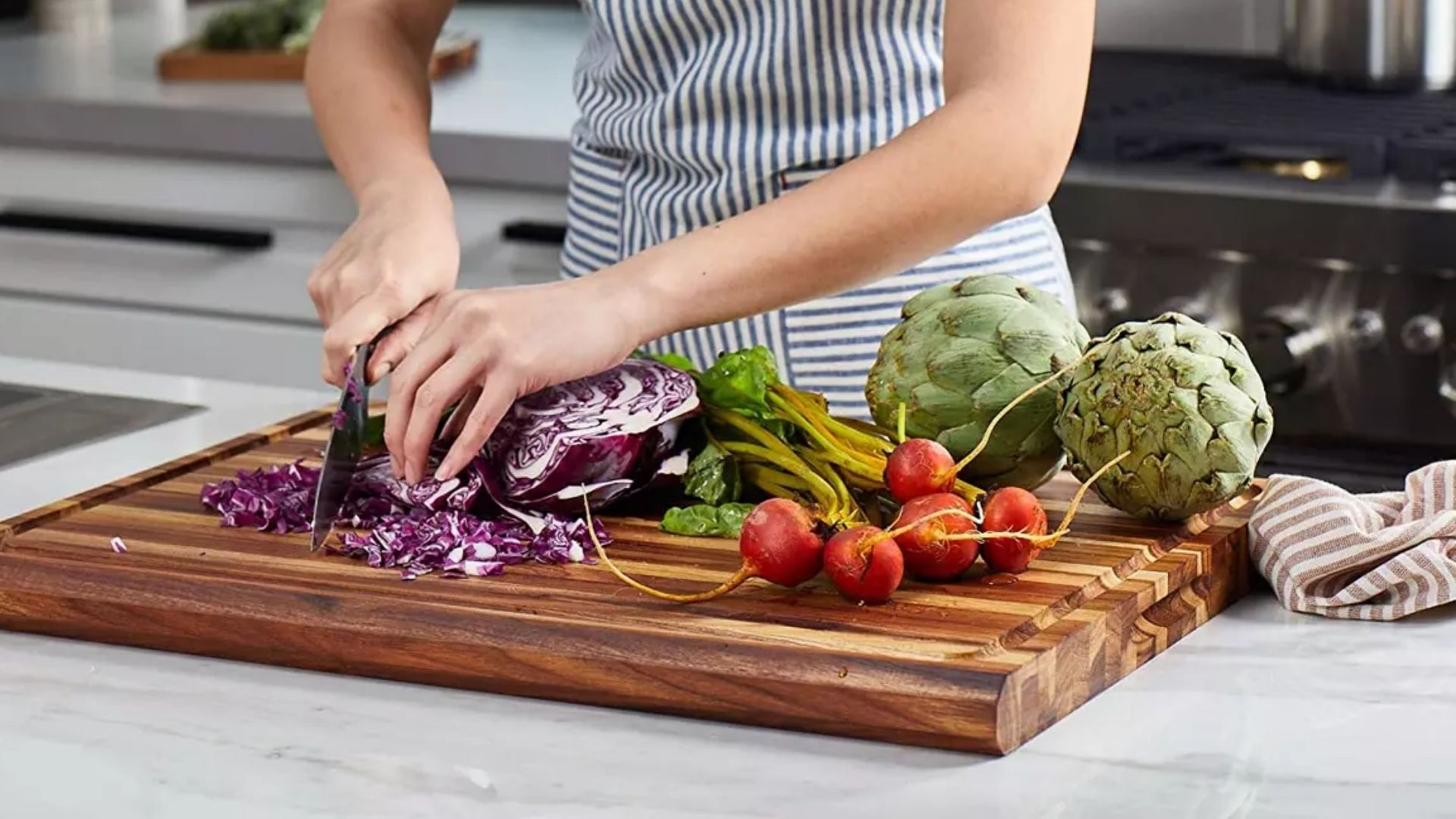Which color cutting board would you use to prepare fresh fruits and vegetables?
Written By James Morgan
Which color cutting board would you use to prepare fresh fruits and vegetables?
If you are a BBQ enthusiast, the precision and care you invest in every detail can make a tangible difference. One underrated aspect that plays a significant role in kitchen safety and food hygiene is the cutting board. Specifically, which color cutting board would you use to prepare fresh fruits and vegetables? This article delves into answering that and more, ensuring you get a comprehensive understanding of the importance and best practices around using cutting boards.

Color-Coded Cutting Boards: A Guide
First and foremost, its essential to grasp why color-coded cutting boards are invaluable in a kitchen, especially one bustling with BBQ preparations. These boards are specifically designed to prevent cross-contamination. With varied foods like raw meat, fresh fruits, vegetables, and cooked items passing through your cutting board, using a single board can be perilous.
Understanding the Colors
Color-coded cutting boards are designed to mitigate the risk of cross-contamination by allocating specific colors for different food types. Here's a generalized guide:
- Red: Raw meat
- Blue: Raw fish
- Green: Fresh fruits and vegetables
- Yellow: Poultry
- Brown: Cooked meat
- White: Dairy and bakery items
As you can see, the green cutting board is dedicated to fresh fruits and vegetables, aligning perfectly with the question, Which color cutting board would you use to prepare fresh fruits and vegetables? The answer is unequivocally GREEN.

Why BBQ Enthusiasts Should Care About Color-Coded Boards
In the world of BBQ, preventing cross-contamination is not just about safety; its also about preserving the integrity of flavors. The last thing you want is your beautifully charred vegetables to taste like raw fish. By using a green cutting board for fresh fruits and vegetables, you ensure that your food remains fresh and true to its natural flavors.
Moreover, the risk of foodborne illnesses significantly diminishes when you stick strictly to using a dedicated board for raw meats and another for fresh produce. Imagine preparing a batch of exquisite vegetable skewers only to have them ruined by bacteria from raw meat. Not a scenario any BBQ enthusiast wants to encounter!
Maintaining Your Cutting Boards
Maintaining your cutting boards in pristine condition is another crucial aspect. Here are some key tips:
- Always wash your cutting boards immediately after using them. Use hot, soapy water, and ensure they are completely dry before putting them away.
- Avoid using cutting boards with deep grooves or cracks, as they can harbor bacteria. Replace such boards promptly.
- Consider sealing your wooden cutting boards occasionally to maintain their longevity. For more on this, check out How to reseal a wood cutting board.

Additional Benefits of Color-Coded Boards
Beyond just safety, color-coded cutting boards offer several other advantages:
Organized Cooking
Knowing which board to use reduces confusion, streamlines your cooking process, and makes it easier when you have multiple hands helping in the kitchen.
Aesthetic Appeal
Color-coded boards can add a dash of vibrancy to your barbecue setup, making the cooking area look more organized and professional.
Common Hurdles and Solutions
One common hurdle many BBQ aficionados encounter is the limited space for multiple cutting boards. If thats the case, try using stackable boards or boards with thin profiles that are easy to store. Just make sure you adequately sanitize and dry them before storing.
Another issue could be the quality of the boards you are using. Inferior quality boards are prone to wear and tear faster, compromising food safety. Invest in high-quality boards that are durable and reliable. Check out this Tips & Tricks on Using Cutting Boards for more information.
FAQs
How often should I replace my cutting board?
You should replace your cutting board once it has deep grooves or shows signs of warping. Regular inspection is key.
Can I use the same cutting board for all types of food?
Its highly recommended to use color-coded cutting boards to prevent cross-contamination and maintain food safety.
Are wooden cutting boards better than plastic ones?
Both have their pros and cons. Wooden boards are gentler on knives, while plastic boards are easier to sanitize. Learn more here.
For more on ensuring food safety and some incredible BBQ tips, visit our blog.
As an Amazon Associate, I earn from qualifying purchases.



